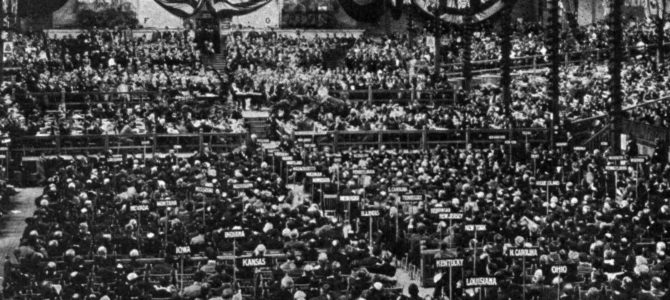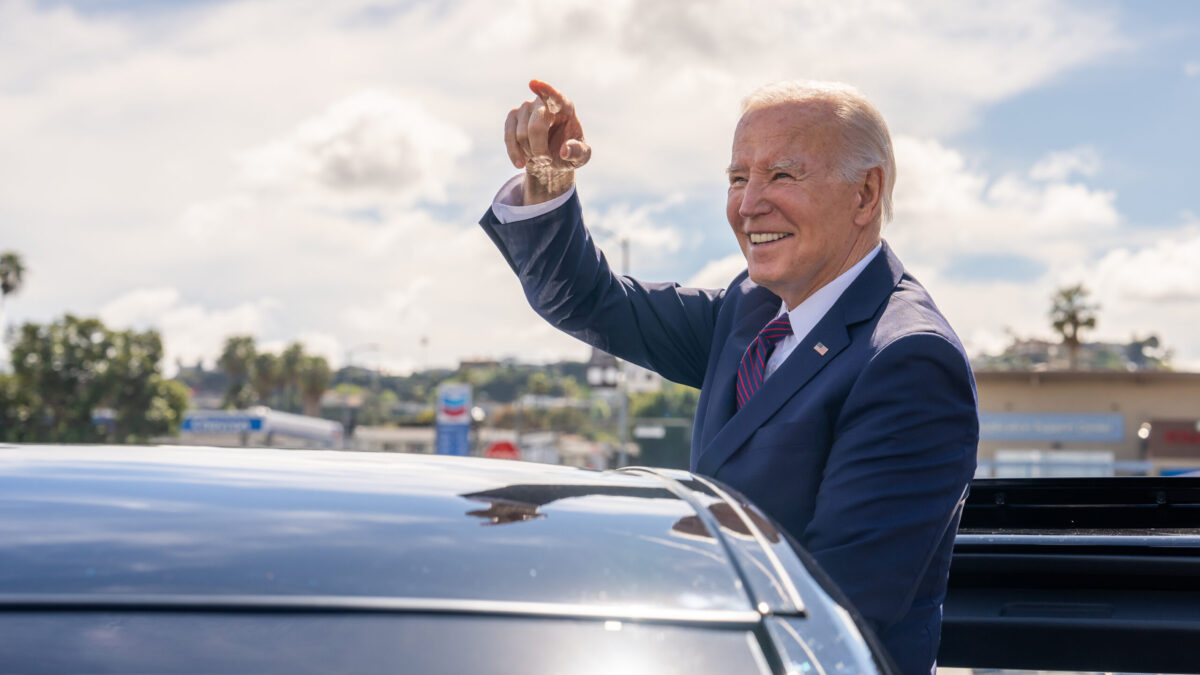
With talk abounding about a potentially brokered GOP convention this July in Cleveland, a little background is in order. The convention’s primary purpose is to produce a nominee acceptable to a majority of the delegates, who are there, in turn, to represent the views of the party members of their respective states.
The delegates’ job is not to simply ratify whoever gets the most popular votes—or delegates—as the nominee. Were that the case, there would be no need for delegates, or a convention; the victor could be determined by merely tallying up the popular vote, and giving the nomination to the person with the most votes.
In the pre-telecommunications age, conventions were much likelier to need to be “brokered” because candidates weren’t well-known outside their own states or regions, and the party was much less “nationalized,” and instead needed the various factions to hash out their differences to find a commonly acceptable nominee (and platform). Today, all these things are well known to voters at the time they vote in their respective primaries, meaning the “hashing out” effectively occurs in a series of voting in the various states over a five-month process.
There’s no need anymore, for example, for states to nominate a “favorite son” who has no chance of winning in order to have other party members consider their views at the convention. In addition, a nationwide system of primaries and caucuses in which the voters at large get to participate is relatively recent, having really begun only in 1972.
Brokered Conventions Happen, But Not Often
All that said, the GOP has a storied history of brokered conventions where it was not obvious before the convention who the nominee would (or should) be. When a race is practically uncontested (like when there’s an incumbent president), or only two significant candidates, that process takes care of itself by producing a majority of delegates committed to one candidate, who is then obviously the winner long before the convention starts.
But where there are three or more candidates with significant support among the delegates, and none with a majority, the question of who has the most delegates is subordinated to the question of who will best represent the party in November. Indeed, since its first convention in 1856, the Republican Party has had ten presidential elections in which no candidate coming into the convention had a majority of delegates. In seven of those conventions, the GOP did not nominate the person who came in with the most delegates.
The last brokered GOP convention was in 1952 (although there was almost one in 1976 between Ronald Reagan and Gerald Ford, where the race was close enough that control over some disputed state delegations made a difference). In the ‘52 race, Ohio Sen. Robert Taft entered the convention with 35 percent of the delegates, followed by General Dwight D. Eisenhower with 26.3 percent, California Gov. Earl Warren with 17.3 percent, and Minnesota Gov. Harold Stassen with 11.3 percent. Most delegates at the convention preferred Taft as the true conservative, but shifted their votes to Eisenhower because he had a much greater likelihood of winning in November. As history showed, they were right.
Let’s Briefly Review the Brokered Convention History
In 1948, New York Gov. Thomas Dewey came into the nomination with the most delegates, and became the nominee after the second ballot. In 1940, Dewey also came in with the most delegates—37 percent, followed by Taft with 20 percent, and businessman Wendell Willkie (who had been a Democrat until a year earlier) with 11 percent. After six ballots, the convention settled on Willkie as the compromise choice.
In 1920, General Leonard Wood came in with 29 percent of the delegates, Illinois Gov. Frank Lowden with 21 percent, California Sen. Hiram Johnson with 13.5 percent, and Ohio Sen. Warren Harding with 6.7 percent. After ten ballots, Harding became the nominee (and went on to win the general election with 60 percent of the popular vote—the second-most-dominant popular vote in U.S. history).
In 1916, after three ballots, the GOP nominated frontrunner Supreme Court Justice Charles Evans Hughes, who came in with 25 percent of the delegates.
In 1888, Ohio Sen. John Sherman came in with 28 percent of the delegates, followed by Indiana federal judge Walter Gresham with 13.5 percent, New York lawyer and politician Chauncey Depew with 12 percent, and Indiana Sen. Benjamin Harrison with 10 percent. Harrison was chosen after eight ballots, and eventually won one of the closest general elections in U.S. history.
In 1884, frontrunner Maine Sen. James G. Blaine, with 41 percent of the delegates, was nominated after four ballots.
In 1880, the clear frontrunner, with 40 percent of the delegates, was former president and war hero Ulysses S. Grant. Blaine had 37.6 percent, and Ohio Sen. John Sherman 12 percent. After 36 ballots (the longest in GOP history), the convention chose as a compromise candidate Ohio Rep. James Garfield, who had entered the convention with no delegates whatsoever. Garfield won the general election by merely 2,000 popular votes, but an electoral blowout.
In 1876, Blaine was the frontrunner, with 38 percent of the delegates. Three others ran a distant third with about 13 percent each, and Ohio Gov. Rutherford B. Hayes was in fourth with 8 percent. After seven ballots, Hayes was chosen as a compromise candidate. He lost the general election popular vote (arguably because of black voter suppression in the South), but won a disputed Electoral College vote in the most bitterly fought election in U.S. history.
In 1860, New York Sen. William H. Seward entered the convention as the prohibitive favorite, with 37 percent of the delegates. After three ballots, the convention settled on the distant second-place contender, who had only 22 percent of the delegates. You may have heard of former Illinois Rep. Abraham Lincoln.
A Slightly Better Track Record of Success
The purpose of brokered conventions is to produce a nominee acceptable to Republicans nationwide and who can win the general election. Six of the GOP’s ten brokered conventions have produced a nominee who went on to become president, with five of them winning the popular vote. By contrast, in the ten elections since 1960 in which the GOP was not nominating an incumbent, the Republican nominee has won four times.
Whatever one may think of the GOP brokering conventions, their track record in producing winning candidates has been slightly better than the modern system of choosing nominees. Perhaps the GOP ought not to be afraid of the possibility.
Correction: An earlier version of this article said five of the GOP’s brokered conventions produced presidents. It was six. Five won the popular vote.








